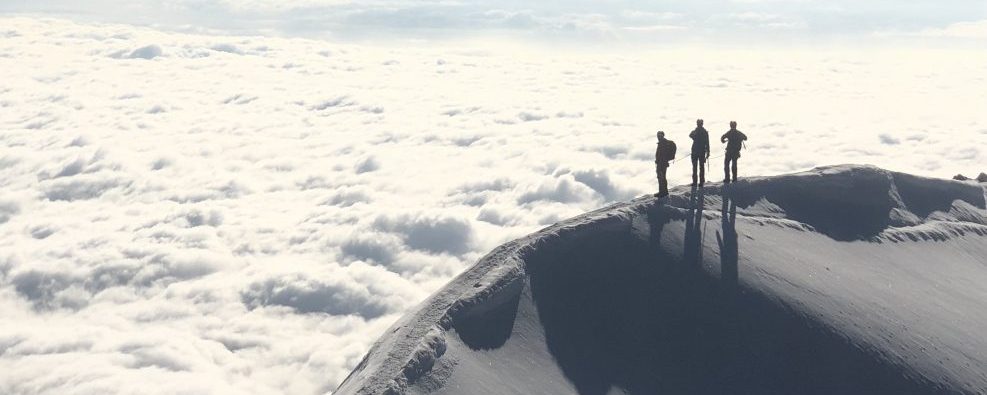5 Tips for Safer Rappels
1: Use a backup
This may be the most important rule in increasing your safety while rappelling. When setting up your rappel, incorporate a prussic (or an autoblock, which is quicker to rig) below your rappel device. If using an extension this can be clipped directly to your harness’ belay loop. It is important that the prussic does not slide up into your rappel device, which can interfere with the braking of the device, and is another reason that an extension is important. The backup will allow you go hands free in order to deal with rope tangles and in the event you were hit by something while rappelling (very common while on the ice) you will not lose control even if you let go. Furthermore, by putting a backup on the rope, if you ever threaded the ropes incorrectly and committed to the rappel, the backup ensures you are still connected to the ropes and will prevent an otherwise catastrophe!
2: Use an extension for multiple rappels
While doing multiple rappels the use of an extension will make transitions at anchors more efficient and ultimate increase your safety on the way down. An extension provides a simple solution to clip into the next anchor and added distance between the rappel device and your harness allows for a more effective use of a backup prussic and also gives more control (it is easier to keep two hands below the device and allows for more effective breaking). An extension can be accomplished using a double length runner, but my preference these days is to use a pre-sewn sling specific for the task (Mammut and Beal both make these). While Spectra type runners will work in a pinch, nylon runners should be used for this task. Furthermore, you should make sure to eliminate any slack when clipping into an anchor.
3: Dress it up and tighten it down
What type of knot you use depends a lot on personal preference, the terrain you are in and the diameters of ropes you are joining. However, no matter what knot you choose it is important to make sure the knot is well dressed and set well before you use it. By this I mean make sure the knot is neat and free of twists and then tighten it down by hand as much as possible. This is especially important when using an overhand knot to join the ropes.
4: Tie knots at the end
If there is one way to prevent rappelling off the end of a rope knots at the end are the sure way to eliminate this hazard. But, so many people hate having these knots, they get caught, they get forgot, etc… So, here are the rules: If you are not using a backup (see backup) you should have knots at the end while doing multi-pitch rappels. If you are rappelling on skinny icy ropes in the winter (think ice climbing), you should have knots. If you are stretching the rappels (think 55+m on a 60m ropes), you should knots. The most effective way to deal with knots is tie two separate knots, on in each rope strand, by either doing an overhand or an overhand on a bite. The individual knots tend to stay tied better than joining the two rope ends together. And, don’t forget, untie before pulling the rope!
5: Back up and bounce test rappel anchors
If you are skeptical about rappelling on an anchor make sure to give it a good test before you commit to it, do this while you are backed up! If you are still concerned have the first person go with some gear backing up, but not taking any weight on, the anchor. Remember, your life is worth a lot more than any carabiner or cam on your rack, so if you have doubts about the quality of an anchor leave some gear and make it safe!






